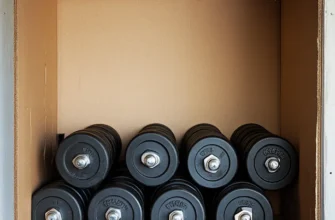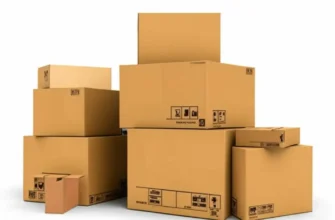Relocating from point A to point B can seem straightforward, but it involves more than just packing and driving. Proper planning, the right packing materials, and an understanding of what moving and hauling services can offer are essential for a smooth experience. Here’s everything you need to know about A to B moving and hauling to make your next move seamless and efficient.

- 1. Planning Your Move
- 2. Choosing the Right Moving & Hauling Services
- 3. Packing Tips for A to B Moving
- 4. Loading Tips for A to B Moving & Hauling
- 5. Recommended Moving Checklist (Table)
- 6. Moving Day: Final Preparations
- 7. Unloading and Settling In
- Frequently Asked Questions About A to B Moving & Hauling
1. Planning Your Move
Successful moving starts with effective planning. Here’s how to prepare:
- Create a Moving Checklist: List tasks to complete before, during, and after the move. Break them into manageable steps.
- Set a Budget: Calculate all moving costs, including packing supplies, hauling services, transportation, and potential storage fees.
- Schedule the Move Early: Book your moving and hauling company at least a month in advance, especially if moving during peak season.
2. Choosing the Right Moving & Hauling Services
Moving and hauling companies offer a range of services to help you relocate your belongings. Here’s what to consider:
- Full-Service Moving: This includes packing, loading, transporting, unloading, and sometimes unpacking. It’s ideal for those who want a hands-off experience.
- Labor-Only Services: This includes just the loading and unloading of your belongings. It’s an economical option if you’re renting a moving truck yourself.
- Hauling & Disposal Services: Useful for disposing of unwanted items, such as old furniture or appliances.
- Specialty Moves: For items like pianos, antiques, or large equipment, specialty movers provide extra care.
3. Packing Tips for A to B Moving
Proper packing minimizes the risk of damage. Follow these packing tips for a safe move:
- Use Quality Packing Materials: Invest in durable boxes, bubble wrap, packing paper, and furniture pads.
- Label Boxes Clearly: Mark each box with its contents and the room it belongs to, such as “Kitchen – Glassware.”
- Pack Heavy Items in Small Boxes: Items like books or weights should go in small boxes to make them easier to lift.
- Disassemble Large Furniture: Remove legs from tables, and take apart bed frames to save space and reduce risk.
4. Loading Tips for A to B Moving & Hauling
The way you load items in the truck matters. Here are some strategies to optimize space and ensure safety:
- Start with Heavy Items: Place furniture, appliances, and large boxes at the back of the truck and on the floor.
- Distribute Weight Evenly: This keeps the truck balanced and prevents items from shifting during transport.
- Stack Boxes by Weight: Place heavier boxes on the bottom and lighter ones on top.
- Secure Everything: Use straps or tie-downs to keep items from moving during transit.
5. Recommended Moving Checklist (Table)
Use this checklist to organize your A to B moving process efficiently:
| Task | Timeline | Notes |
|---|---|---|
| Create a moving checklist | 8 weeks before move | List all tasks |
| Set a moving budget | 8 weeks before move | Include all possible costs |
| Book moving & hauling services | 4-6 weeks before move | Schedule early |
| Purchase packing supplies | 4 weeks before move | Boxes, tape, bubble wrap |
| Begin packing non-essential items | 3 weeks before move | Off-season clothes, decor |
| Pack essential items last | 1 week before move | Toiletries, daily-use items |
| Label boxes | As you pack | Indicate contents & rooms |
| Confirm details with moving company | 1 week before move | Date, time, and address |
6. Moving Day: Final Preparations
On the day of the move, follow these steps to ensure everything goes smoothly:
- Double-Check Inventory: Confirm that all items are packed and ready to load.
- Ensure Clear Pathways: Keep hallways and walkways clear to avoid trips and falls.
- Communicate with Movers: Explain any special instructions or fragile items to the movers.
- Keep Essentials with You: Bring a separate bag with essentials, including important documents, snacks, and a change of clothes.
7. Unloading and Settling In
Unloading and unpacking can be tiring, but these tips make it easier:
- Direct Boxes to Rooms: Label each room or place signs to help movers put boxes in the correct locations.
- Unpack Essentials First: Start with kitchen and bathroom essentials to make the first night comfortable.
- Inspect Items for Damage: Check for any damages, especially for fragile or valuable items, and report any issues to the moving company promptly.
Frequently Asked Questions About A to B Moving & Hauling
Q: How far in advance should I book a moving company?
A: Ideally, book 4-6 weeks in advance. If you’re moving during the summer or holidays, consider booking even earlier.
Q: What should I do with unwanted items?
A: Many moving and hauling services offer disposal or donation assistance. Alternatively, you can sell or donate items before the move.
Q: How much does A to B moving typically cost?
A: Costs vary based on distance, volume, and services required. Request quotes from multiple companies to compare prices.
With the right preparation and a reliable moving and hauling service, relocating from point A to point B can be a straightforward process. By following this guide, you’ll have a well-organized, efficient move that minimizes stress and maximizes efficiency. Contact All State Moving to make your next move smooth and hassle-free!



